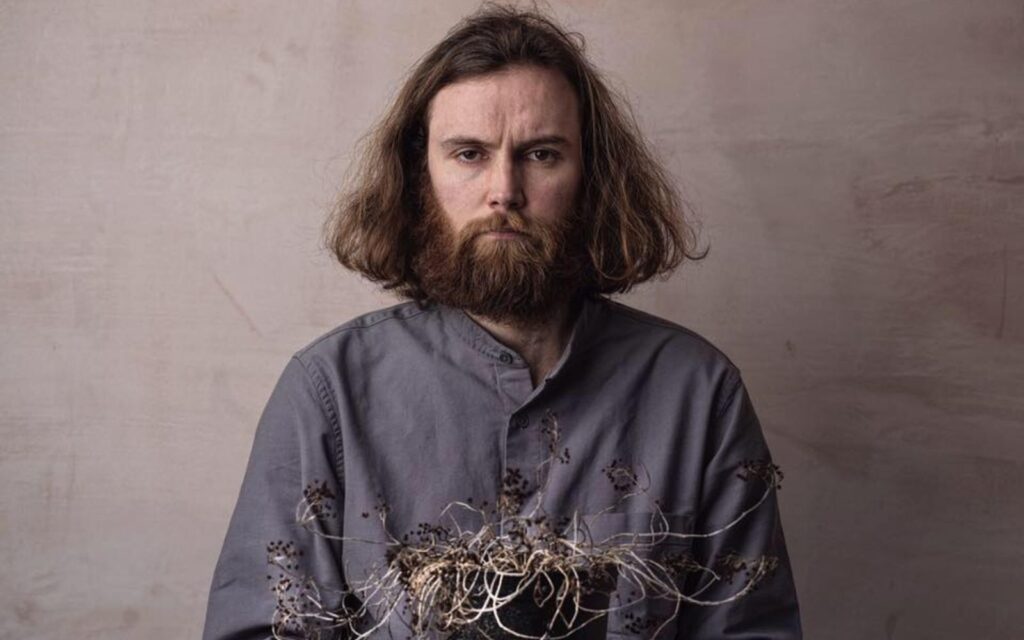Prior to completing his BA in Fine Art at RMIT and launching a successful career as a visual artist, Breslin was an actor and playwright who devised a multitude of works for stage. Since graduating, his paintings have appeared in numerous solo and group shows in white box galleries. However, theatre and performance have remained an integral part of Breslin’s creative practice. Throughout his painting career, he has remained interested in performative work that is made in front of an audience.
First performed in an open air studio at the Docklands in 2006, Trybe brings together Breslin’s passion for painting and his interest in kinesthetic, “live” experiences of art – art that lives and breathes, and brings us together.
“Painting is the earliest known form of art, it was used to tell stories, and create symbols for rituals. Art practice is a ritual that binds societies, allows them to express themselves, and marks their rites of passage throughout their life,” Breslin explains, “This performance is more interested in that kind of art making and not a practice that seems elitist and only for a few who can do it. It deals with the process of being creative, and not so much the end result, as this kind of paint practice served many tribal cultures within the heart of their spirit.”
Trybe is a kind of ritual, according to Breslin, a visual feast that turns the art of painting into a show. A blank 4.4 metre by 3.6 metre canvas lies on the ground as the show opens, and over the course of hour or so, Breslin throws paint at the canvas, creating an image of a monstrous tribal face. At the end of each performance, the artwork is auctioned off, with the proceeds going to support the Lasallian Foundation’s projects for marginalised children and youth in Papua New Guinea.
Breslin’s inspiration for the show came from the visceral, dynamic work of artists like Jackson Pollack, Keifer and Yves Klein, as well as Matthew Barney, whose drawing restraint series positions the artist as an athlete struggling with the tension put against him by himself.
“I like the idea of the audience witnessing a real passion that chooses to override physical pain for the prize of creative adventure,” Breslin says. “I wanted to try to develop a performance that was theatrical in every way but was about the act of creation, using paint and colour as the tool.”
Seven “sweaty, heaving, costumed characters” appear on stage with Breslin, representing different colours, interacting with and reacting to the artist as he applies paint to the canvas. In devising the show, Breslin gave his performers general cues for where they were supposed to be and when, but he also gave them a detailed description of what their colour was meant to represent. Choreographer Stephen Agisilaou then worked with the performers to give their character a specific physical expression.
“The hand-picked and talented dancers that play the various colours in the performance express as much through their faces as through their bodies,” Breslin says. “They have developed characters that are really full and colourful, and that sort of movement and dance is vital. The character development is more important to me.”
Alongside dance and painting, the show incorporates film, puppetry and mime. Through this riot of activity, Breslin hopes to communicate something profound to his audience about our shared humanity.
“The performance has many themes; it’s about how the forces of creativity are more about trust than control. Here a painting is used to express that idea, but the idea itself is how I feel about the process of a life itself from the beginning to the end. It also makes a statement about unity as the colours as characters represent the history of those colors: red, blue, yellow, white and black – culturally, philosophically and symbolically. Then within the performance the colours-characters themselves are painted into the artwork to symbolise the tribal face of us all.
“I hope [in watching the show] the audience realises that life itself is a process of actualisation. I am sure in their hearts they know this already, hopefully, the performance can reaffirm that in some small way. Trybe is primarily about letting go. Ironically, so much control has gone into producing this performance about letting go!”
BY SIMONE UBALDI







